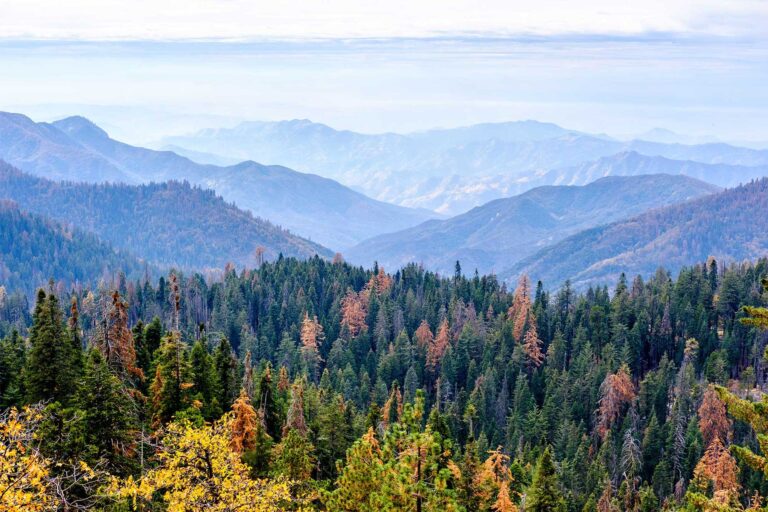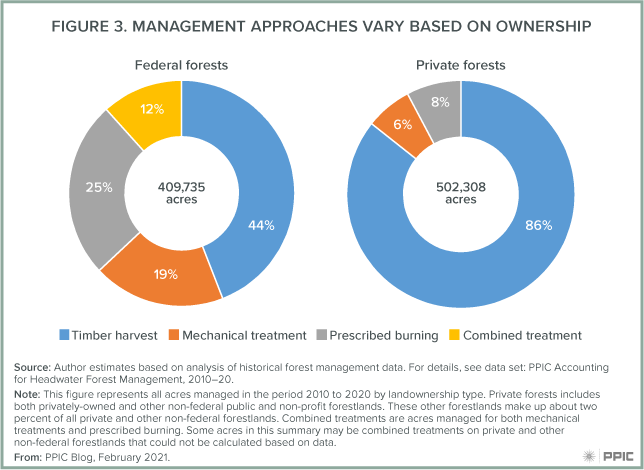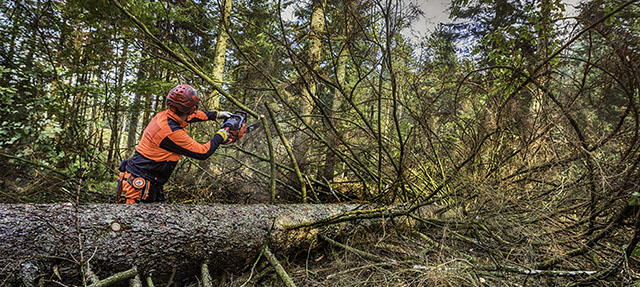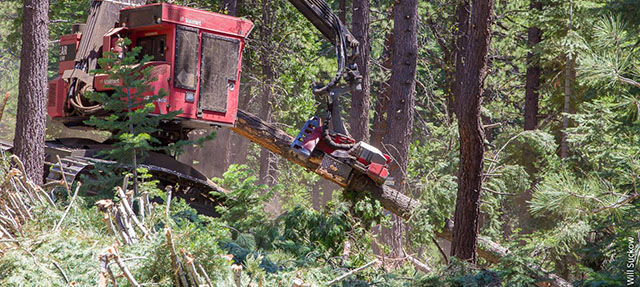Forests in the Sierra‒Cascade headwater region have dramatically changed over the past 150 years. The prohibition of Indigenous burning, aggressive wildfire suppression, and early timber harvest practices made these forests denser over time, increasing their vulnerability to catastrophic wildfires and widespread tree-die off. These forests are a dominant feature on the landscape, occupying nearly 40% of the 15 million acre headwater region overall and well over half of some northern watersheds (Figure 1a).
Changing the way we manage these forests can improve their health and make them more resilient to wildfire, drought, and disease. Healthier forests provide a host of important benefits. To get there, we’ll need to greatly increase the pace and scale of forest management on public and private lands. Federal agencies are major players; they own two-thirds of these forests—and even higher shares in the southern part of the region (Figure 1b).
Improving the health of the state’s forests has become a pressing issue. Last summer, California and the US Forest Service (USFS) jointly agreed to significantly increase two important management approaches—mechanical thinning and prescribed fire—over the next five years. In January, the Forest Management Task Force released California’s first action plan for forest health. State funding for improving forest health has increased since 2019, and the governor’s 2021‒22 budget proposes to continue this trend.
As policymakers and forest managers take steps to accelerate the pace, understanding the scale and scope of recent management efforts can provide useful guidance. Yet until now there hasn’t been a comprehensive picture of how private, state, and federal entities have managed forests. To fill this gap, we did a basic accounting of management efforts in mixed-conifer forests in the Sierra‒Cascade region over the past decade.
Here are four takeaways:
- Forest management is not scaling fast enough to meet forest health objectives. Experts suggest that reducing the spread of severe wildfires requires strategically treating and maintaining approximately 20‒30% of forests on the landscape. Forest managers have treated around 16% of the region’s mixed-conifer forests over the past decade. Management levels vary across the region, with only 8 of the 24 watersheds meeting or exceeding this target (Figure 1c). The pace has been considerably faster on lands owned by the private sector and non-federal agencies (28%) than on federally owned lands (11%).
- Timber harvest has been the main management approach. Though its primary purpose is to harvest logs, some timber harvest techniques also reduce wildfire risk and improve resilience to drought and pests. More than two-thirds of the 912,000 acres managed over the past decade used timber harvesting (Figure 2). The practice was more prevalent in northern watersheds, where private forest ownership is more common. The costs and benefits of different management approaches—timber harvest, mechanical thinning, and prescribed burning—should be at the center of discussions about which to use where.
- Management approaches vary based on ownership. Nearly 90% of acres managed on private forests were harvested (Figure 3). By contrast, federal forests had a more diversified management portfolio, and timber harvest accounts for less than half of managed acres on these lands. In absolute terms, USFS carried out three times more mechanical and prescribed burning treatments compared to private and other public landowners in the region.
- The pace of management has been flat. Although the share of non-timber management has increased, the overall pace of management has remained relatively stable over the past decade—at around 90,000 acres annually (Figure 4). One likely explanation: public funding sources that support management have also been stagnant over this period. The pace should pick up once new state funds for forests reach the ground.
As forest managers and policymakers chart a course to improve forest health, improving our overall understanding of past management activities is essential. Our analysis helps provide a clearer picture of forest management accomplishments and gaps—which can in turn help set priorities for allocating scarce management resources. Yet the technical challenge of even basic accounting of these activities remains immense. Data sets that make accounting possible have different levels of quality and collection standards. Improving the accuracy, completeness, and comparability of data collected on forest management across the headwater region will be critical for evaluating progress toward meeting goals for forest health.
Note: The underlying data and additional notes on accounting for headwater forest management activity can be found in Data Set: PPIC Accounting for Headwater Forest Management, 2010‒20.
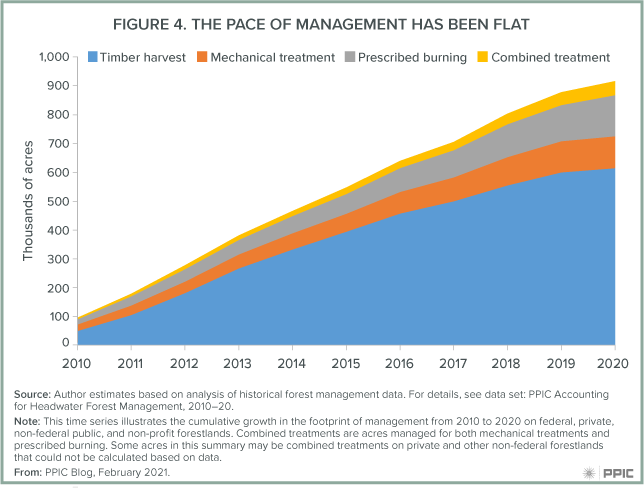
This analysis will be discussed on Feb. 11, 2021 at the event The Path to Healthy Headwater Forests.-2-

